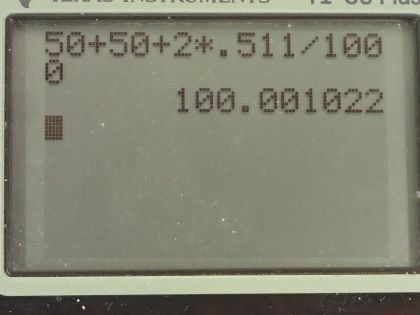Question
When an electron and positron collide at the SLAC facility, they each have 50.0 GeV kinetic energies. What is the total collision energy available, taking into account the annihilation energy? Note that the annihilation energy is insignificant, because the electrons are highly relativistic.
Final Answer
The rest energy of the particles is insignificant in comparison with their kinetic energies.
Solution video
OpenStax College Physics for AP® Courses, Chapter 33, Problem 12 (Problems & Exercises)

vote with a rating of
votes with an average rating of
.
Calculator Screenshots
Video Transcript
This is College Physics Answers with Shaun Dychko. At the Stanford Linear Accelerator, there's an electron with an energy of 50.0 gigaelectron volts that collides head-on with a positron that also has an energy of 50.0 gigaelectron volts and we are asked to figure out what is the total energy available in this collision? And we will add also the rest energy of each particle, which is 0.511 megaelectron volts for each particle. So total energy will be the sum of the electron's energy and the positron's energy kinetic energy that is plus 2 times the rest energy for each particle. So that's 50.0 gigaelectron volts plus 50.0 gigaelectron volts plus 2 times 0.511 megaelectron volts converted into gigaelectron volts and that is 100.001022 gigaelectron volts and we can see that this rest energy is insignificant in comparison to the massive kinetic energies that these particles have. And so the answer to a precision in the tenths place here is 100.0 gigaelectron volts and the rest energy doesn't really change our answer in any significant way.
